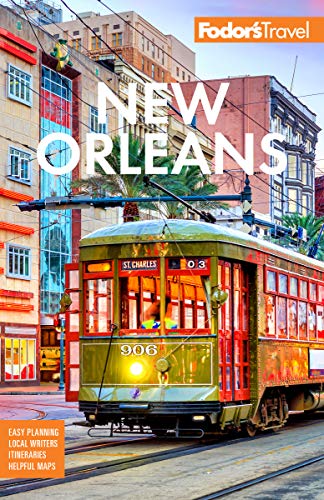Even locals love to get lost in the history and romance of the French Quarter, the city's oldest neighborhood. As you stroll through narrow side streets flanked by historic architecture, you'll marvel at the neighborhood's ability to endure. Keep walking, slowly, and take the time to look up at fabled wrought-iron balcony railings or peer down cobblestone corridors for a glimpse of secret courtyard gardens.
The French Quarter will not run out of ways to entertain you. The Vieux Carré, French for "Old Square," is technically the entire French Quarter, but you'll notice a divide at Decatur Street, as things start to feel more modern toward the river, and chain stores and restaurants pop up. The historic part of the French Quarter is where you can slip down a quiet street, gaze up at a row of balconies, and forget for a moment that you are living in the 21st century. During the day, the French Quarter offers several different faces to its visitors. The streets running parallel to the river all bear distinct personas: Decatur Street is a strip of tourist shops, hotels, restaurants, and bars uptown from Jackson Square; downtown from the square, it becomes a hangout for hipsters and leather-clad regulars drawn to shadowy bars, vintage clothing boutiques, funky antiques emporiums, and novelty stores. Modern development along the river side of Decatur Street can make this strip feel like a suburban corridor, but some of the best of old New Orleans is still here, like the massive Mississippi River, Café du Monde, and the French Market.
Chartres Street remains a relatively calm stretch of inviting shops and eateries. Royal Street is, perhaps aptly, the address of sophisticated antiques shops, glittering jewelry stores, and many of the Quarter's finest residences. Bourbon Street claims the strip bars, sex shops, extravagant cocktails, and flashy music clubs filmmakers love to feature. Dauphine and Burgundy streets are more residential, with just a few restaurants and bars offering retreats for locals.
After dark you'll find fine dining and easy-going eateries aplenty and music pouring from the doorways of bars as freely as the drinks flowing inside (and outside—plastic "go cups" for your cocktails are standard at the exit of every bar and club since consuming alcohol on public streets is legal in New Orleans). On any ordinary evening a stroll through the French Quarter is a moving concert. Strains of traditional jazz, blues, classic rock 'n' roll, and electronic dance beats all flow from the various bars and nightclubs, while street musicians add their unique sounds to the mix.
For all its evening-time adult entertainment, the French Quarter by day is quite kid-friendly. Children adore eating beignets, watching ships sail across the Mississippi, walking through the tunnel-shaped Caribbean fish tank at the Aquarium of the Americas, munching crunchy treats made out of bugs at the Audubon Insectarium, and savoring the same delicious po'boy sandwiches and fried seafood that their parents enjoy.






